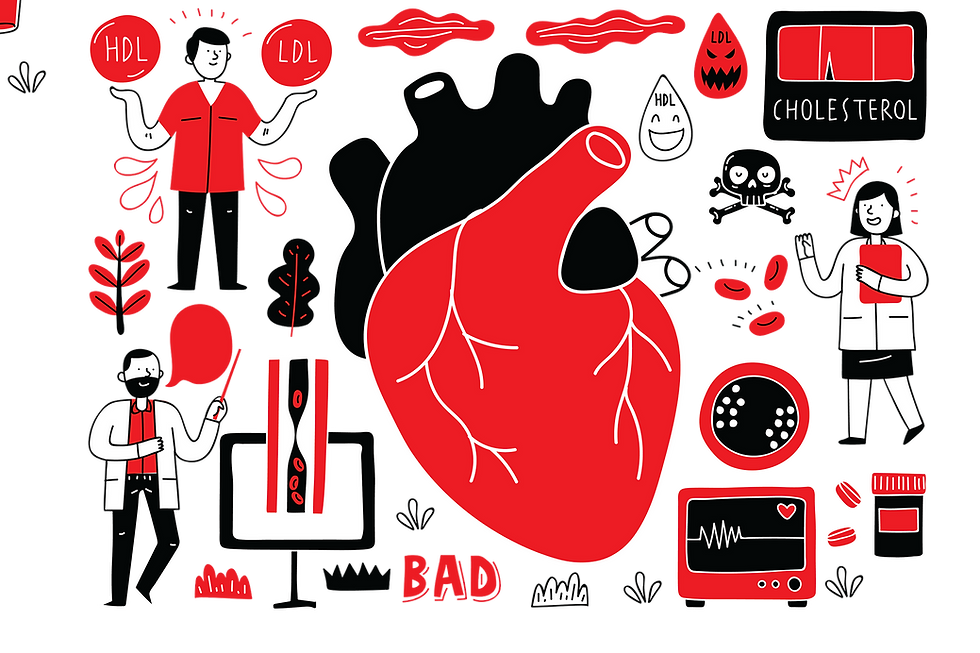Predicting Heart Disease at Age 10
- Denise Scott
- Jul 9
- 3 min read
I recently read an interesting medical research article on a study done in Denmark on children with central (abdominal) obesity. The findings were presented this year at the European Congress on Obesity.

Young child in a white coat with a stethoscope holding a paper heart.
The Study
This longitudinal study, done over ten years, followed hundreds of children from birth to age 10. The children were seen and measured 14 times. The children’s height and waist circumference were measured each visit to obtain a waist-to-height ratio, which is thought to be better than BMI (body mass index) in determining heart disease risk.
The waist-to-height ratio is simply the waist circumference, measured in centimeters (cm), divided by the height measured in cm.
Waist circumference (cm)/height (cm) = the waist to height ratio

Measuring the waist circumference of a child. The measurement is taken in centimeters at the widest part of the waist.
This ratio in children and adults should be 0.5 or less and remain relatively stable throughout life.
At age 10, the study children also had a cardiometabolic risk assessment consisting of fasting blood sugar and insulin, triglycerides, HDL, and blood pressure.
The Results
Using the measurements and lab tests, three categories of waist-to-height ratio growth were identified:
A Stable group (the waist-to-height ratio remained stable and didn’t vary). This group comprised 66% of the children studied.
High-falling (the waist-to-height ratio rose early on then dropped to where it started). This group made up 18% of those studied.
Slow-rising (waist-to-height ratio rose steadily throughout the study period). This was 15% of those studied.
The Risks
The study found that the children in the slow-rising group were more likely to show signs of cardiovascular risk at age 10, such as higher blood pressure, high triglycerides, low HDL, and insulin resistance.
The degree of central obesity in early childhood has predictive value. Gradually increasing abdominal obesity during the first decade of life can indicate overall metabolic and heart health. The amount of central fat at age 10 is a factor for later heart disease.
The researchers concluded that based on these findings, central obesity and the waist-to-hip ratio in children can be a marker to identify those at risk for heart disease at an early age.
Practical Points
Monitoring central obesity in children can easily be done at well-child visits, where height and weight measurements are already taken and plotted. An additional easy measurement is the waist circumference. A simple waist-to-height ratio can help identify children at risk for heart disease for early intervention.
The waist-to-height ratio is essentially a measure of fat mass; it is thought to be a better indicator than BMI for predicting heart disease, fatty liver disease, and type 2 diabetes. Monitoring central obesity may become part of routine care, although it has not yet been recommended for doctors caring for children. These measurements can also be done at home.

Cartoon of steps to take for heart disease prevention such as a healthy diet, regular exercise, blood pressure control, adequate sleep, and regular checkups.
Take Home Message
A waist-to-height ratio is a simple measurement with predictive value in children and adults - something you can discuss with your doctor if you have concerns about your child’s weight or abdominal growth. The value is early intervention and future prevention of chronic disease for your child to enjoy a healthy life. The earlier preventive measures start, the better, although it is never too late!




Comments